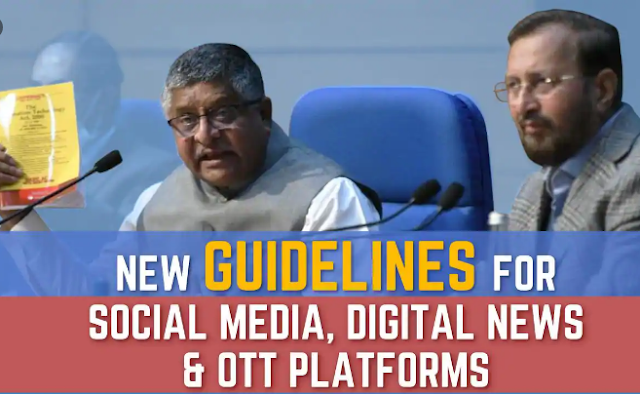What Do The New Digital Content Guidelines By Government Mean To Your Digital Marketing Strategy?
Are you worried that you might have to change your digital content strategy due to Union IT Minister Ravi Shankar Prasad’s recently released digital content guidelines? Be assured that your marketing strategy is safe from these rules and regulations as long as you don’t post anything controversial.
While revealing the reason behind this step in a press
conference, Information Technology Minister Ravi Shankar Prasad and Information
& Broadcast Minister Prakash Javadekar said, “we want to establish a soft
touch progressive institutional mechanism with a level playing field featuring
a Code of Ethics and a three-tier grievance redresser framework for news
publishers and OTT platforms on the digital media.” (Source Code- India Today)
At the level of OTT service providers, if a complaint is not addressed satisfactorily, it would advance to a self-regulatory body collectively formed by OTTs. As for the content on social media sites, the service providers will be subjected to more accountability with strict laws to enforce it.
It will be necessary for Social Media giants to appoint an India-based compliance officer and inform the user of the reasons for taking down his/her posts.
The government will set up an oversight mechanism which will have a committee with representatives from ministries of Defense, External Affairs, Home, I&B, Law, IT, Women & Child Development.
The Ministry of Information and Broadcasting will release a charter for self-regulating bodies, including codes of practices.
OTT Service providers will be required to put self-classification on its content, that is 13+, 16+ or adult, based on sex, violence, and nudity. The idea is to ensure that kids don’t have access to content that is not right.
Three-tier grievance redresses mechanism for self-regulation to execute the code of ethics effectively. Level – 1: Self-regulation by publishers. Level – 2: Self-regulation by the self-regulating bodies of the publishers. Level – 3: Oversight mechanism.
Digital marketers don’t have
anything to worry about as these regulations have been implemented to curb the
‘misuse’ of digital space.




Comments
Post a Comment